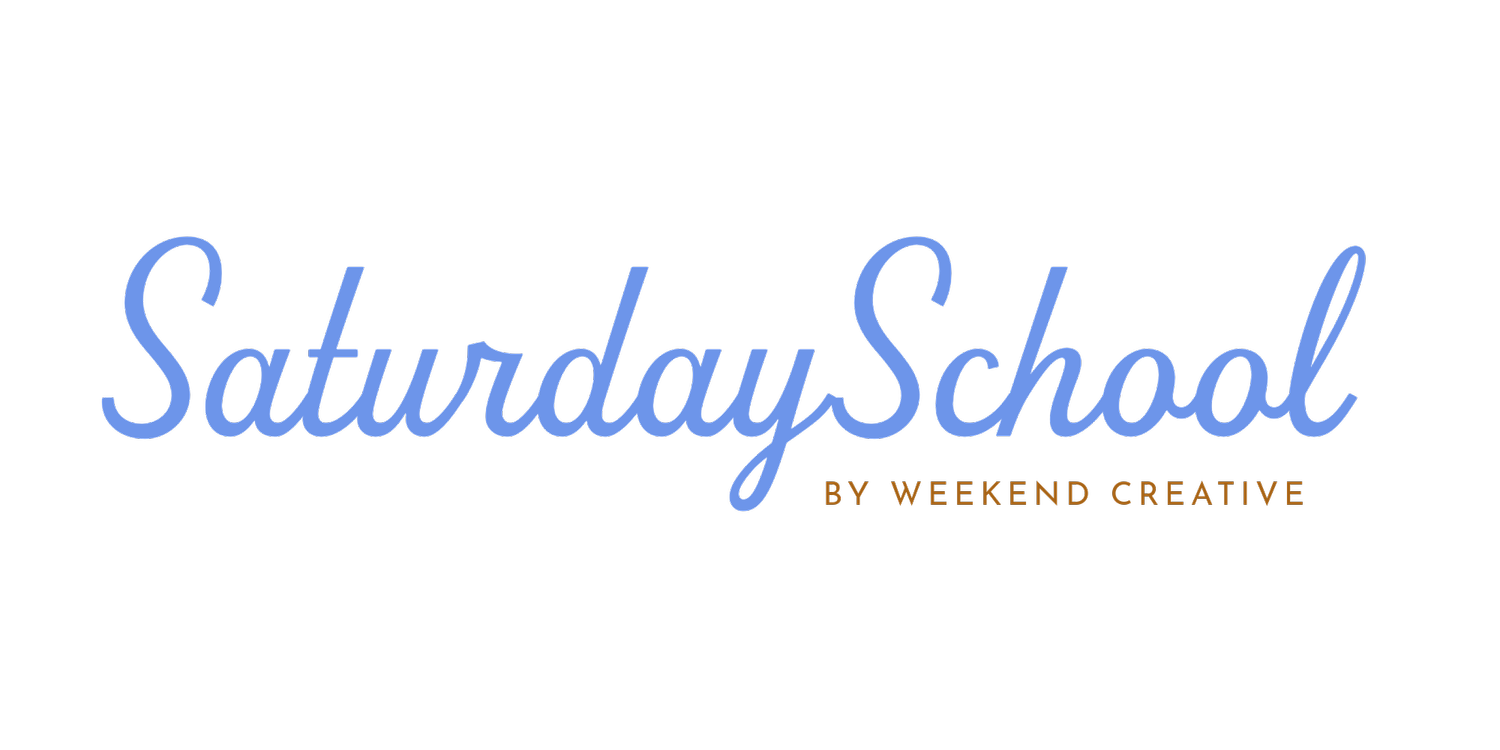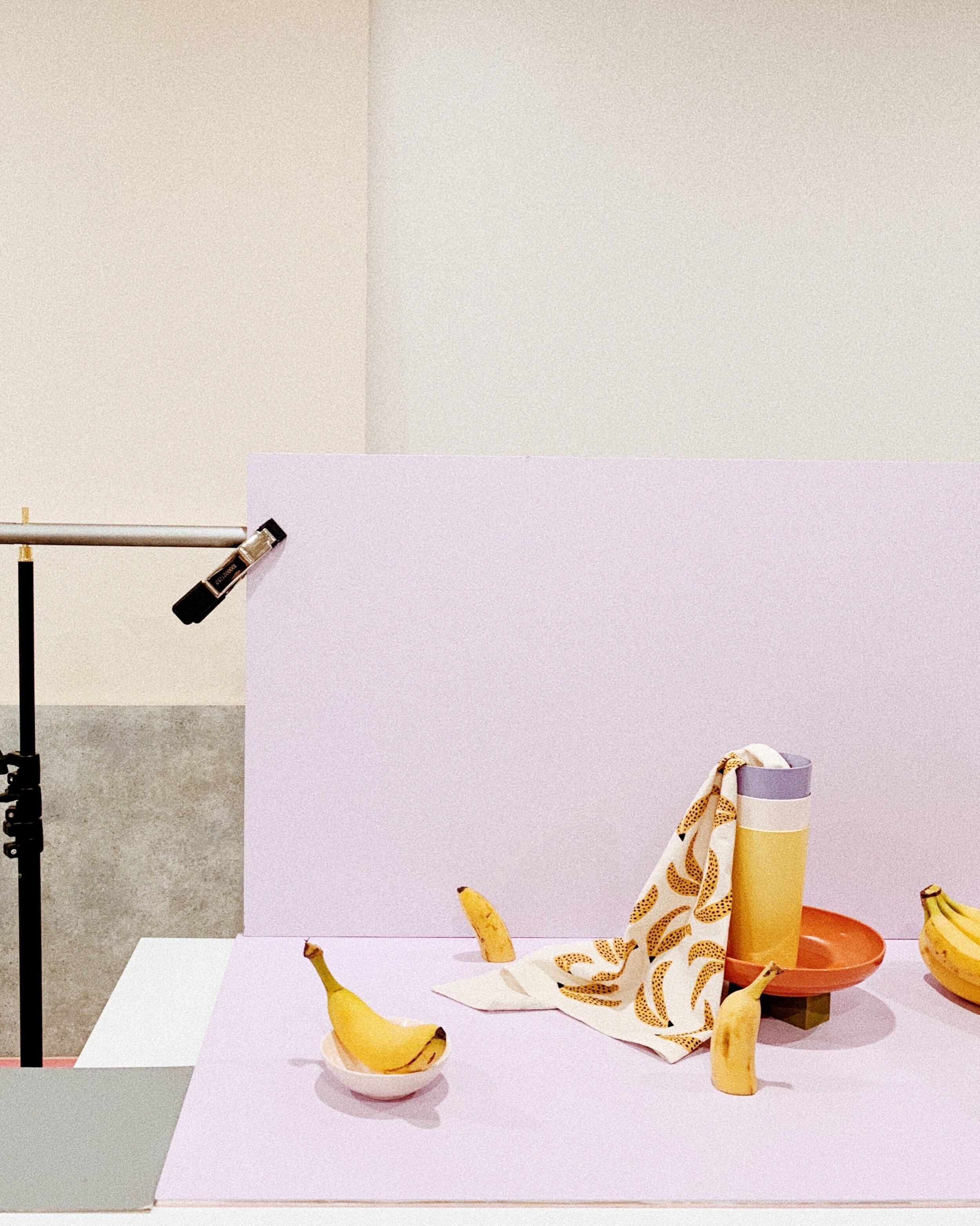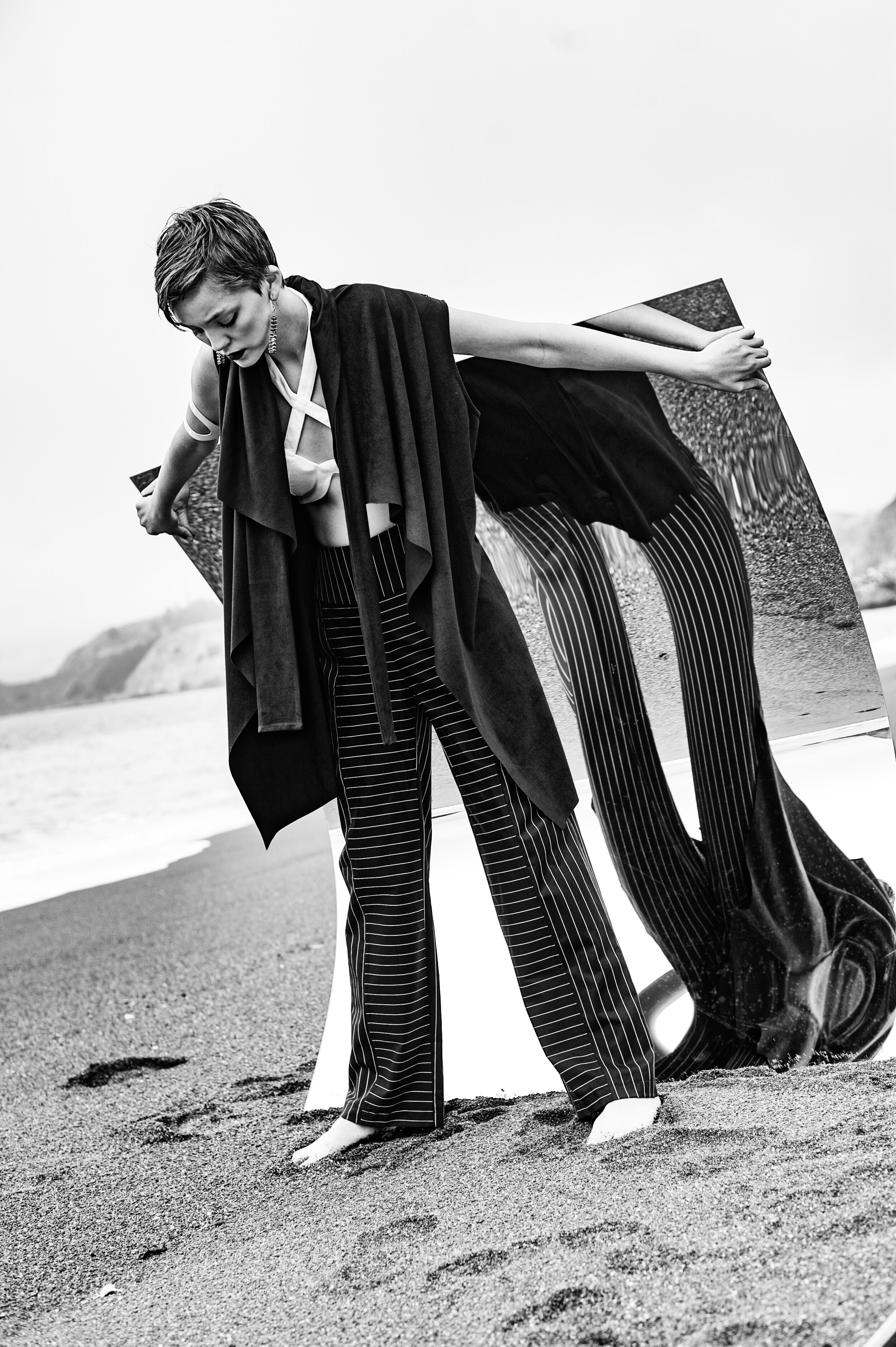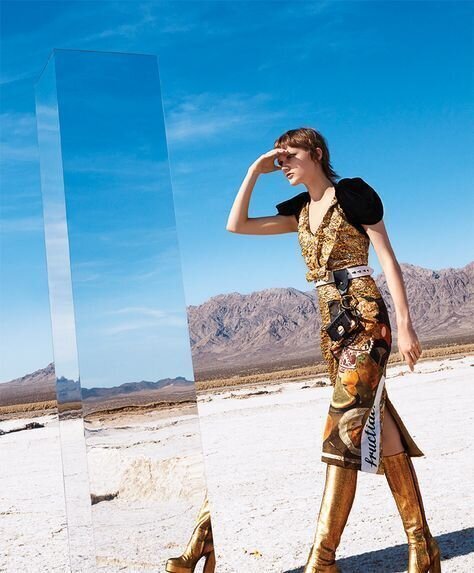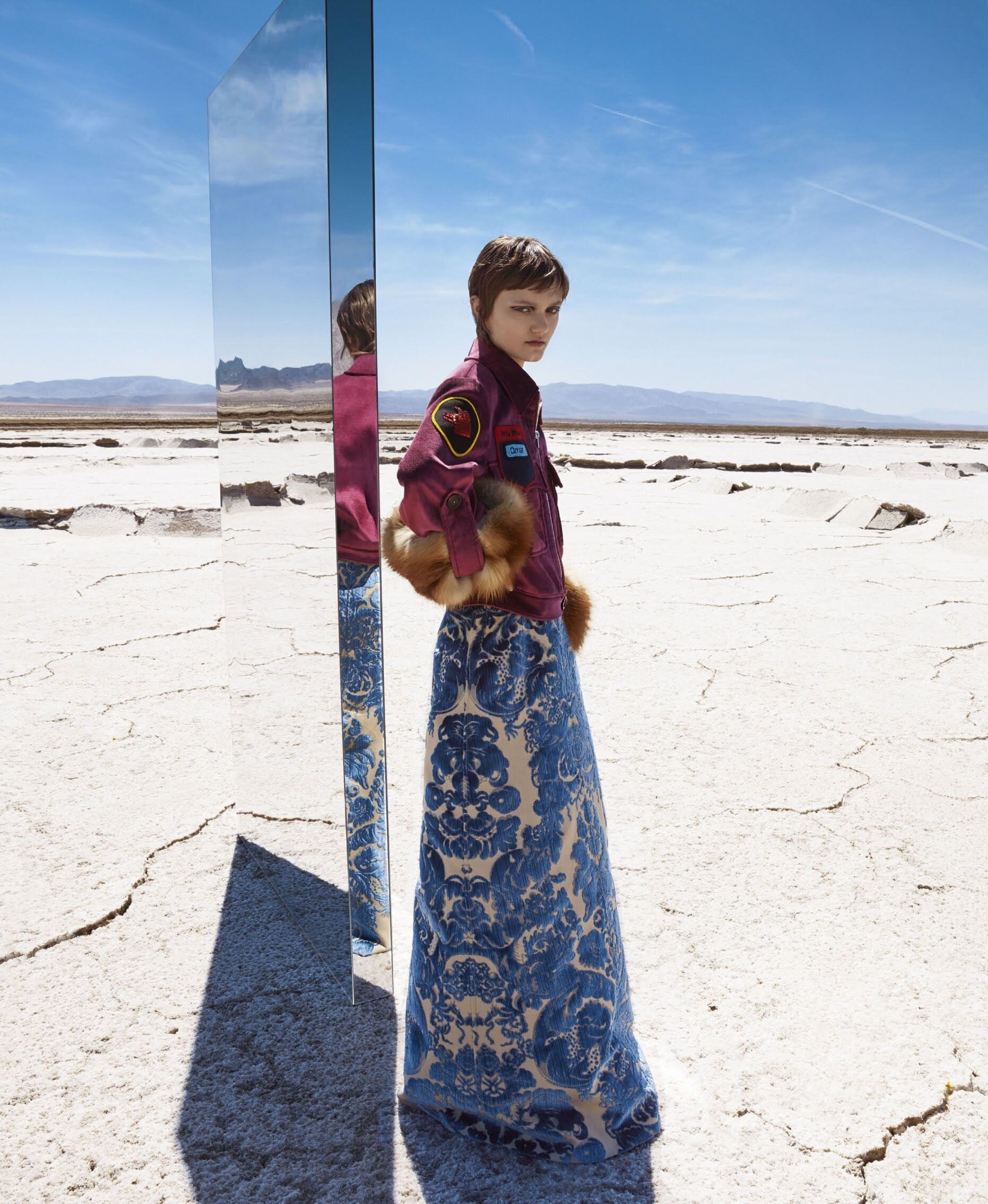Creating Original Photos: How to Avoid Copying Others
Hi! Let’s talk about something super fun - photographers copying other photographers. Woohoo!
Ok, ok, I know this is not the most exciting topic, but it’s so incredibly important, and it needs to be addressed. Unfortunately this is something that happens way too often, and we’ve reached a point where we’ve started to see it happen with our own work more and more. We’ve seen our images either directly copied, or seen work that was just a liiiiitle too close to feel like it was original. However, this post is not directed at any one person, but it’s call to the entire photography community to do better.
And actually not just the photography community, but the freelancing community as a whole. I know this happens to graphic designers, copywriters (yes people get their captions stolen) and just about anyone who creates for a living.
I’m going to be super blunt for a minute - are you ready, deep breath - taking someone else’s ideas and passing them off as your own is plagiarism. It is a form of stealing, and it is also lying to clients, whether they are current clients you are creating work for, or clients who may hire you based off work that they thought was original. It’s lazy, it hurts our industry, and in many cases it’s also illegal.
Ok, there, the worst is over and I’m going to be a little nicer the rest of this post haha. I just really want you to understand how serious this is. I honestly hate the term “imitation is the sincerest form of flattery” because I feel like it makes it sound so much lighter than it actually is. It’s a big deal, and it’s not ok.
The internet is a small, small place. MUCH smaller than you think it is. If you copy someone and think that they won’t see it, think again. The chances that they or someone else will notice are actually pretty high, even if they don’t say anything. I can’t tell you how many times I’ve noticed someone copying our work, or the work of another creator that we follow. It’s not a good look and it’s something you should think about when you start to create work. What kind of reputation do you want to have? Do you want to be contributing to the problem? Do you want to be known for incredible, innovative, original work, or for being lazy and a copycat? Sorry, I know I said I would be nicer from here on out. I just get fired up about this haha.
Let me let you guys in on a little secret - we actually did this a lot in the beginning of our business. It was not always intentional - sometimes we didn’t even realize we were doing it, and we didn’t realize how big of a deal it was. We would get a new client and then immediately go to Pinterest to come up with ideas and oftentimes we would basically recreate images that we saw and liked. As we grew in our skill level and experience, and this started happening to us, we realized just how damaging it was. We have since removed all of those images from our portfolio and have put practices into place to help us avoid copying - even unintentionally - in the future.
If you are new in your photography journey, and you’re feeling a little guilty because of how familiar this all sounds, know that you are not alone. We were right there with you. However, you can learn from our mistakes. Now that you know better, you can do better.
So how do you actually do better?
First, I would recommend that you do an honest audit of your site and social media channels and remove anything that you know was a copy or too closely inspired by someone else. Trust me when I say that it will be better for you to remove these now than to have a client notice, or to have the original creator reach out to you.
Go do it right now, before you even read the rest of this post.
Ok, did you do it?
Good. Let’s take a collective deep breath and then dive into how we can avoid this issue in the future:
understand the law
Before we can really get into how to avoid copying, let’s talk about why it’s wrong in the first place.
Disclaimer - the laws that I’m talking about apply to the United States since that’s where we’re located. Laws may be different in other countries. Also, copyright law is complicated and not always black and white. I will explain things to the best of my abilities but I am not a lawyer and the information that I share should not be considered legal advice. If you are dealing with copyright issues I recommend consulting an intellectual property lawyer on this topic.
First off, when you take an image, that image is automatically your copyrighted intellectual property, regardless of if you actually register it. The only exception to this would be if you have a “work for hire” agreement with the company who hires you. We would recommend against this and advise that you always retain copyright and then license images to your clients. This is a whole conversation that needs it’s own blog post, so I won’t say much more about it here, but you can read this article for more information.
So if you own the copyright to all your images, then it’s pretty clear that if someone uses your image without your written permission, that is a violation of the law. Where it gets a little fuzzier is when someone copies things that are in an image that you created, which could potentially be a derivative work. What is a derivative work? The federal Copyright Act defines a derivative work as a “work based or derived from one or more already existing works.” The owner of the copyrighted work has the sole right to create derivative works, or give permission to someone else to create a derivative. There are exceptions to this, but in most cases, creating work based directly off the work of another creator could be considered a copyright infringement.
A famous example of this is when Vanilla Ice sampled the baseline from Queen’s Under Pressure when creating his song, Ice Ice Baby. Vanilla Ice didn’t copy the entire song, just one aspect of it, but it was enough for Queen to take him to court and it resulted in him purchasing the rights from the band (for 4 million dollars) and also in Queen and David Bowie (who was a cowriter of the song) getting songwriter credits on Ice Ice Baby.
Another example is when Shephard Fairey created the Hope poster during Obama’s campaign. This poster was based on an image taken by Associated Press freelancer Mannie Garcia and AP insisted that they should get compensation from Fairey. This ended in a settlement outside of court where they split profits, but it demonstrates how important this discussion is. You cannot create work directly based off of someone else’s work without their permission.
So how do you know if you’re infringing on someone’s copyright? According to the US Copyright Office, “making minor changes or additions of little substance to a preexisting work will not qualify a work as a new version for copyright purposes. The new material must be original and copyrightable in itself.” According to the American Society of Media Photographers, “in law, it does not matter whether the change is great or small, or whether the result is recognizably like the original; what matters is whether your creative process began with an existing image.” So essentially you can’t really take someone’s work and then recreate it without copyright issues, but to be super honest, this is somewhat of a grey area and the only way to know for sure is to take it to court. However, at the end of the day, I think that “how much can I copy and still claim this work my as own?” is the wrong question. Instead we should be asking ourselves how we can create original work and encourage others to do the same. Let’s not try to get around copyright infringement, but instead stay far, far away from it.
There’s so much to learn on this topic, and so I want to share some articles that I found to be helpful as I was studying this.
What are Derivative Works Under Copyright Law?
When is an Image a Derivative Work?
United States Copyright Office
Does a Derivative Work Violate Your Copyright?
Measuring Fair Use: The Four Factors
Things Every Designer Should Know About Intellectual Property &
Copyright Infringement
What Do I Do If Someone Makes an Illustration or Painting Based on My Photograph?
mood boards are inspiration
Now let’s talk about how we can create original work, starting with mood boards. Mood boards are not a collection of images that you will be copying during the shoot. They are inspiration, and a way to visually show your client the direction that the shoot will be going in so that you can ensure that you are on the same page. When your images are done, they should look like they could live with the other images in your mood board, not like they actually ARE those images. You never want someone to look at your image and be able to tell exactly where your inspiration came from. If you find yourself pulling too many aspects from one image, it’s going to end up as a duplicate so be very selective about what you choose to be inspired by, and always make sure to find ways to tweak your images to make them completely your own.
I also think that it is important to start planning your shoot before you look at other photographer’s images. Like I mentioned earlier, Pinterest used to be my first stop when planning a shoot. Now I try to avoid going there until closer to the end of my process. Instead of starting with the work of other photographers, I first go to the brand and study them and their goals. I develop concepts and ideas based off of that and then only after I already have some solid ideas in mind do I go look for images that will help me to communicate the ideas I already had instead of letting the images direct my ideas. Do you see the difference?
Even if you aren’t intending to copy, looking at other people’s work will influence you. Images and ideas will stick in your brain and once they’re there it’ll be hard to get them out. Yes, this way of working is more challenging. It’s much easier to go straight to sources that you know will help you instead of doing the work yourself. I’m still tempted to do this, but honestly since I’ve started forcing myself to create original work, our images have improved so, so much. I can see a huge difference, and I feel so proud of what we create. It also gets easier, creativity is a muscle that you can exercise, and the more that you practice developing your own ideas, the easier it will become. There will still be times when you’re creatively burnt out and it’ll be hard. But trust me, push through it and you will create better work.
look for inspiration outside of your field
While it’s important to make sure you aren’t copying others, it’s still normal to want to get inspiration, it’s a natural part of the process. One of our biggest tips for not copying others is to look for inspiration outside of your field. For example, we often get inspired by architecture for our sets, and graphic design for colors. Now, this doesn’t mean that you literally copy, again you want to simply be inspired, don’t duplicate as this can still be copyright infringement. But it’s definitely easier to see the lines in a building and think about how that could be applied to a set and then transformed to be totally your own than to look at a photograph and then try to make it yours. I hope this makes sense haha. Let me show you an example from our recent work.
When planning our latest shoot for Anecdote Candles, I had started planning a group shot and had a general idea of the layout that I wanted. I had already decided the colors and sketched out the shot. Then, as I was looking through some images during the final stages, I saw this beautiful arch by Artur de Menezes Fernandes:
I was really inspired by this shape and decided that I wanted to include it in this image. Now this arch is not an original shape, it’s a common shape in architecture and life. If you look at the image we created, you would have no idea that it was inspired by this design if I hadn’t told you:
If I had taken that image and created an arch and then added that texture to the walls, put some blocks in the scene and used those colors, that would have been an entirely different story. I would argue that even just using the arch and texture would be too much similarity. Hopefully this helps you to see the difference between being inspired by and imitating.
educate your clients
How many times has a client come to you with a fancy schmancy mood board expecting you to copy the work of another photographer? This has definitely happened to us. We’ve seen our work directly copied by other photographers at the request of their client (we know this because we’ve talked with the photographers). We’ve also been in the awkward position of being in a facebook group and having someone post “hi, I’m looking to hire someone to create images like this” and then share our images leaving us to be like why not just hire US?? We’ve also had clients come to us loving a particular image that we created for another client and wanting us to recreate it. In situations like this, you have to remember that your job is to guide the client, you are the expert, and they are hiring you to create work that will help them grow. You do not need to recreate something just because they want you to.
This is where client education comes in. Now, there is a difference between a client sharing images with you to show you the style they want. That’s perfectly normal, and in fact we even ask clients to share images that they like with us during the intake process so we can quote them appropriately. But this goes back to the mood board discussion, the images that you create should be able to belong with those photos, they should not be duplicates. If your client wants you to copy someone, you can simply say, “I love your ideas, and I’m excited to create original work for you that will really work for your brand. I’m going to create some mockups specifically for you and send them over for your approval.” If they still insist, you can remind them that those images were created for a different brand with a different goal/audience in mind and custom work will be significantly more impactful for them. Another point you can share is that part of why they are paying you is to create original work, and then you can talk about intellectual property rights. We actually have it in our contract that we will create original work to the best of our knowledge and abilities so it would violate our contract to directly copy someone else. If they still won’t budge, it’s probably time to drop them as a client.
On our podcast Per Our Last Email, we had a listener send in a story about this, and we discussed some of our own experience in this area. If you want to hear more, head over here and listen to Episode 10: Shaming the Client.
what to do if someone copies you
The first thing to do is to take a breath. It is infuriating when you see your work copied, trust me, I know. It feels so violating and insulting, especially when it was done for a company so you know someone profited off of your hard work. However, before rushing in with a nasty message, remember that professionalism will always get you further than accusations.
I also want to point out that there are definitely times when people can have the same idea at the same time without even knowing it, so there is always the possibility that it could be an accident. Don’t believe me? Let me give you an example from our own experience. As many of you know, Arabela and I worked for a magazine before Weekend Creative. While there, we regularly worked on fashion editorials. One of the shoots that we were a part of was on the beach with mirrors. Here's a shot from that issue:
Several weeks after we shot this, before that issue came out, we saw an almost identical shoot in Harper’s Bazaar. It was on sand, with mirrors, similar poses, and the weirdest part was that our models even looked creepily similar. Take a look -
Now, as their issue hadn’t yet come out when we shot ours, and vice versa there was literally no way that either of us copied the other. So yes, this does happen and it’s something to keep in mind when deciding to call someone else out. I also think it’s important to show others grace when possible, especially if they are a young or small business. A lot of people don’t know that this is wrong and so if we do decide to call someone out we generally come from the place of wanting to educate and build up the community instead of anger. And oftentimes it unfortunately isn’t even worth it to say something. It’s definitely a case by case situation.
A time when you might want to say something is when it’s a larger company who is profiting off of your ideas. Now, remember that it’s possible that their photographer copied you and the company has no idea. In cases like this when you feel like your copyright has been infringed to an extreme degree, we would definitely recommend consulting a lawyer before you even start a conversation to see if you even have a case.
credit others for their ideas and knowledge
This section is a little less about actual photography and more about knowledge and education. It’s awesome that photographers are becoming more transparent with their techniques and that education is becoming more popular. However, learning something specific from someone and then turning around to teach that same thing to others and passing it off as your own is also a form of plagiarism. We’ve seen others do this, even to the extent of trying to profit off of free content that we created on our blog.
Now we know that we don’t own all of our techniques and business practices, but let’s take our blog series on pitching for example. We aren’t the only company to ever cold pitch, we’re hardly even close to the first. However, we did develop the exact method that we use, and the way that we wrote about it and outlined our process belongs to us. For someone to take that same outline and then pass it off as their own educational content would be highly unethical and even potentially a copyright infringement (especially if they profit off of it).
Another example of this is when someone books a coaching call with us and then soon after the call they post a caption on Instagram teaching others exactly what we taught on the call without crediting or mentioning us at all. It’s not that we’re so into ourselves that we need recognition, but it just feels a little icky when we share knowledge generously with someone and then they use that to build up their own following in that way. It just really doesn’t help the creative community when you don’t credit others for what you’ve learned from them. Being honest about where you learned techniques or tips helps others to then learn from that person as well. It’s very easy to credit others for their knowledge, and it doesn’t hurt your credibility at all, in fact it makes you even more credible because others will recognize and admire your honesty.
if you make a mistake - own it
Lastly, if you’ve copied someone in the past, or if someone calls you out on copying or imitating and they’re right, own it. Just own it. Apologize, take down the work, and move on. There is nothing to gain by lying and insisting that something is yours when it isn’t. Getting called out for this is one reason you want to be especially careful when creating client work. Nothing would be more embarrassing than having to go to your client and let them know that you created work that they can no longer use due to a copyright issue, or for them to get a notice from someone saying that the images they are using aren’t original when they trusted you. Own up to it if you’ve done something wrong and then work to avoid making the same mistake again in the future.
My intention with this whole post was to build up our community and call all of us collectively to do better. I really hope that what I’ve shared inspires and empowers you to create your own original work that you’re proud of. Also, let’s look out for each other, and if you see someone copying or using someone else’s work let the original creator know! We’re all in this together and it’ll take all of us doing our part to help turn the tide of this issue in our community.
Is it the weekend yet?
Elle
